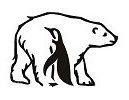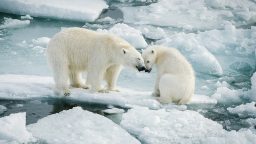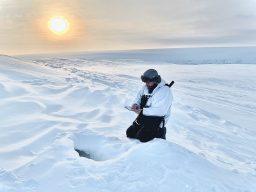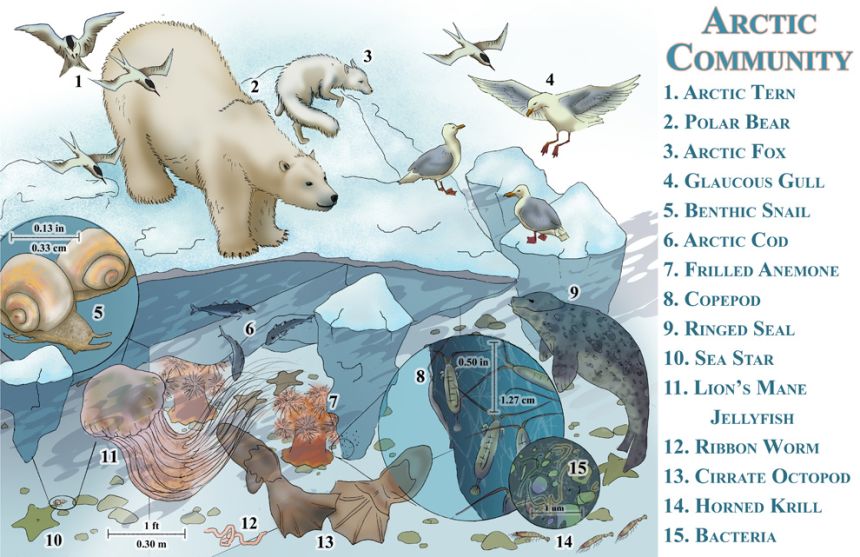
The Arctic is the northernmost region of the Earth. Most scientists define the Arctic as the area beyond the Arctic Circle, a line of latitude approximately 66.5degrees north of the equator. The Arctic Ocean basin and the northern regions of Scandinavia, Russia, Canada, Greenland and the American state of Alaska are located within this circle. Glaciers and icebergs in the Arctic account for about 20% of the fresh water reserves on Earth.
However, most of the Arctic is a saltwater basin of the Arctic Ocean. Some areas of the ocean surface remain frozen all or most of the year. Sea ice is often covered with thick snow cover. Sea ice has a very light surface, or albedo. This means that about 80% of the sunlight hitting the sea ice is reflected back into space.
However, the dark ocean surface absorbs about 90% of the solar radiation. Thanks to thermohaline circulation, thick reflective Arctic sea ice reduces ocean temperatures around the world. The Arctic is experiencing extremely low levels of solar radiation. During the winter months, the Arctic is one of the coldest and darkest places on Earth.
Life in the Arctic Marine Ecosystem
The Arctic Ocean basin is the shallowest of the five oceanic basins on Earth. It is also the least salty due to low evaporation and huge inflows of fresh water from rivers and glaciers. Estuaries, melting glaciers and constantly moving ocean currents contribute to the creation of a dynamic marine ecosystem in the Arctic. Cold circulating water is rich in nutrients.
Marine animals thrive in the Arctic. Major consumers such as shrimp consume plankton, the backbone of the Arctic marine food web. Secondary consumers are fish, seabirds and baleen whales, including blue and bowhead whales. Tertiary consumers, animals that prey primarily on other carnivores, include toothed whales, dolphins, and pinnipeds such as true seals, sea lions, and walruses.
The diverse landscapes of the Arctic provide a variety of terrestrial ecosystems. The Arctic includes the peaks of the Brooks Mountain Range in western North America, the huge Greenland ice sheet, the isolated islands of the Svalbard archipelago, the fjords of northern Scandinavia, as well as the meadow plateaus and rich river valleys of northern Siberia.
Although some forests are located near the Arctic Circle, the flora is mainly limited to grasses, sedges, and tundra vegetation such as mosses and lichens. These autotrophs have the ability to survive, despite the fact that they are covered with snow and ice for most of the year.
Insects such as mosquitoes and moths are common, especially as ice creates ponds in spring and summer. Insects and their larvae provide an essential diet for birds, as well as freshwater fish. The main consumers are animals ranging from tiny lemmings to musk oxen. One of the most famous Arctic herbivores is the caribou, often known in Europe and Asia as the reindeer.
The secondary consumers are arctic foxes and birds of prey such as owls and eagles. The polar bear, the iconic predator of the Arctic, is equally capable of hunting both on land and on ice. Like the polar bear, many other Arctic animals are white: Arctic foxes, belugas, snowy owls, and baby seals. This coloring helps to disguise them among the snow and ice. Some Arctic animals even change their color depending on the season.
Arctic foxes and polar hares, for example, are snow-white in winter, but in the summer months they shed and become covered with a brownish or grayish fur coat. Even the furry pelts of the seals eventually turn dark in color in order to better blend in with the waters of the Arctic Ocean, rather than with the dazzling white ice floes.
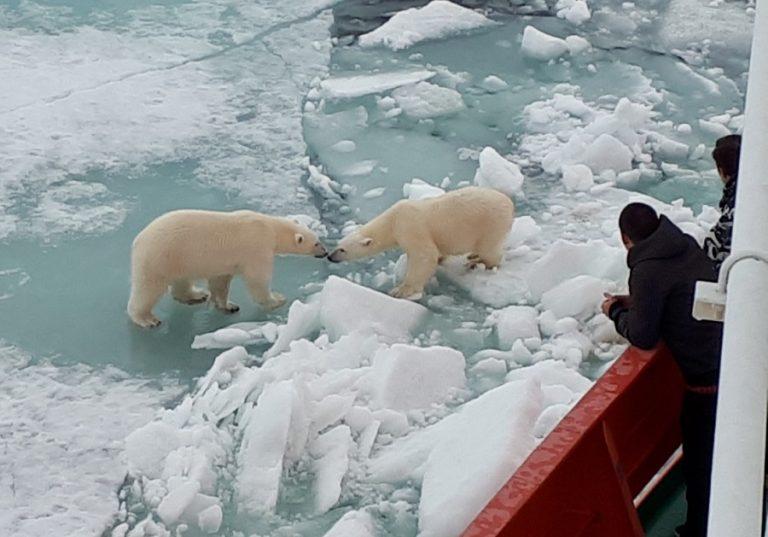
Polar bears and humans. Photo: Rosatom Country
Huge resources
There are huge undeveloped deposits of oil and gas in the Arctic. In Alaska, many oil companies collaborate with indigenous groups, producing and exporting millions of barrels of oil each year. Alaska’s northern slope contains a number of the largest oil fields in the United States and one of the 100 largest natural gas fields. The Arctic is also rich in minerals such as nickel and copper ore.
Mineral resources also include precious stones and rare earth elements, which are used in batteries, magnets, and scanners. Some of these mineral deposits are underground, while others are buried under the Arctic Ocean. Mines and drilling operations often depend on the weather. In winter, machinery can freeze, and the frozen ground becomes too hard to drill.
Almost all Arctic states are trying to assert their authority over the rich resources of the Arctic. This diplomatic conflict has been called the “New Cold War“ or simply the ”Race for the Arctic.” The exclusive economic zones of Russia, Norway, Denmark, Iceland, Greenland, Canada, and the United States extend 200 nautical miles from their coasts.
However, some Arctic states claim territory on their continental shelves, not just on their coastlines. Russia, Greenland, Denmark and Canada, for example, claim the Lomonosov Ridge. The Lomonosov Ridge is an underwater mountain range that stretches from the Canadian Arctic through the North Pole all the way to the waters off the coast of Siberia.
Effects of climate change
Climate change is radically changing geography, biodiversity, and politics in the Arctic. The area of sea ice in the Arctic is decreasing, and the 21st century has been marked by record lows in both winter maximum and summer minimum sea ice extent. Climate scientists estimate that by 2100, most of the Arctic sea ice will melt every summer. This will devastate many animal habitats.
The plight of polar bears, for example, has become a symbol of global warming in the Arctic due to the cascading effects of sea ice loss. Without sea ice, polar bears will not be able to catch enough seals for food. Polar bears that do survive are less likely to produce healthy offspring, reducing the population over several generations.
Poorer food sources also force polar bears to come into contact with humans more often, feeding on garbage heaps. These food sources affect the health of polar bears and increase the number of human conflicts in the Arctic.
The increasingly shrinking Arctic sea ice provides clear shipping routes for trade and travel. The Northwest Passage is still the most profitable shipping route in the Arctic. The Northern Sea Route is on the way. These deep-sea shipping lanes also allow for the use of larger and heavier vessels than the Panama Canal, further increasing trade and profits.
National Geographic Original
More amazing facts about the Arctic can be read here.
